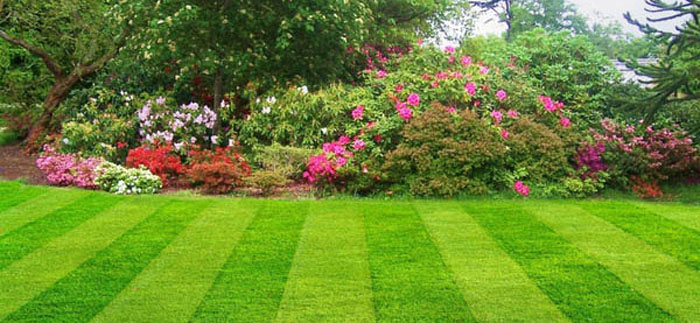
The quest for the greenest lawn on the block has driven many a new homeowner to extremes. You trim, you weed, and you assume that if a little fertilizer is good, a lot must be even better. And so begins the vicious cycle of mowing, watering and fertilizing which gathers speed as the weather warms up until you're mowing your lawn two or three times a week!
It's time to stop the madness. Jake Riekstin, the Superintendant of ClubLink's Wyndance Golf Club in Coppins Corners, Ontario, knows a thing or two about grass. He's here to make the lives of new home owners easier with expert advice on how to keep your lawn green and lush, minus the back-breaking labour.
"To properly fertilize one's lawn, some basic knowledge of plant physiology is required," explains Riekstin. "Roots grow when the soil is cooler, as the weather warms up in the spring and cools down in the fall, and shoots and leaf blades grow in the late-spring and early summer, halting growth when it gets too hot or too dry.
We need to feed the plant in accordance with what it wants to do naturally."
NHBN: What are your rules of thumb when it comes to fertilizing?
JR: Too much is not a good thing. Split applications up over the course of the growing season to prepare the turf for the dog days of summer and then bolster the lawn's reserves in the late-fall (the best time to fertilize) to get it through the winter months.
Also, ensure that coverage is perfect: don't miss any spots and don't go over the same spot too many times.
NHBN: What are the basic steps involved?
JR: Using a rotary spreader, ensure that you are moving when opening and closing the bail to the hopper.
Walk at a steady pace and take note of how far the fertilizer is cast left and right of you.
Make straight passes on the lawn while you fertilize.
On the return pass, walk in a line parallel to your first pass but far enough away that the fertilizer throws just to your footprints from your first pass.
Continue with this method until your entire lawn has been fertilized, being careful not to spread fertilizer into garden beds or onto hardscape where rain or irrigation may carry the fertilizer to a storm sewer.
NHBN: What do the numbers on the bag mean, and how much do they matter?
JR: They matter a lot. The three numbers on the bag (for example 25-4-10) represent the % of Nitrogen (N), Phosphorus (P) and Potassium (K) in the bag respectively. In our example, a 50 lbs. bag of 25-4-10 would provide 12.5 lbs. N, 2 lbs. P and 5 lbs. K.
Nitrogen, phosphorus and potassium are the major nutrients required for plant growth (referred to as macronutrients). In the simplest of terms, nitrogen is responsible for top growth and makes the grass green, phosphorus is responsible for root growth and potassium provides turf vigour ? important in times of heat stress.
NHBN: Any tips for calibrating your spreader?
JR: First and most important is to know or
calculate the area that you'll be fertilizing. The amount of fertilizer required is a function of your target size ? so do that math first.
To accurately determine how much your spreader is putting out, make a pass of approximately 10' in length at a pace that is comfortable while distributing fertilizer (let's say it's covering a 20' swath)
Measure the effective spread width/swath that you're covering and divide 1000 by this number (1000/20'= 50'). Measure off 50' in your yard. Now, weigh out an amount of fertilizer (say 10lbs) and spread the fertilizer along this 50' swath, both there and back. Now reweigh what is left in the hopper (say 6 lbs left). You now know that your spreader (at your comfortable walking speed) is distributing 4 lbs of fertilizer per one thousand square feet. Using a bag of 25-4-10, simple math tells us that we've just applied 1lb of N, 0.16lb P and 0.40lb K to 1000 square feet.
A little research will provide how much of N, P and K you require for your lawn over the course of a growing season. Altering your spreader setting to apply more or less product per 1000 sf (and therefore more or less N, P and K per 1000 sf) to meet the recommendations.
Calibrating your spreader is time well spent, good for your lawn and good for the environment.
When it comes to fertilizing your lawn, quality definitely trumps quantity. Taking the time to feed your grass what it really needs when it really needs it will save you time and money and leave you with a lawn you can be proud of.




